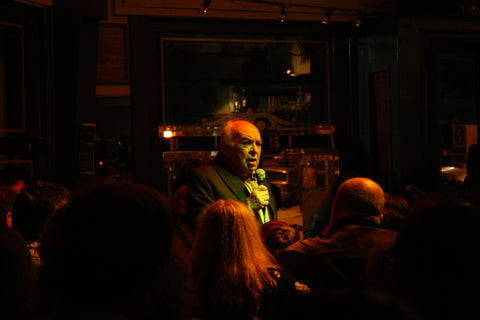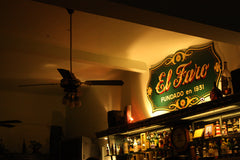Tango Shoes in Buenos Aires - Where one pair is never enough.
by Rebecca T on March 21, 2014 Comments (0)

(photo copyright E. Soukhin)
I never was one to get overly excited about shoes. I was a Doc Marten type girl - traipsing around in a pair of boots that would undoubtedly get me through rainstorms and music festivals for the next five to ten years. At best you would have found may two pairs of heels in my closet that only showed their heads on the rare occasions that dressing up was required.
Then I found tango.
While some would argue that it isn't necessary to be dancing on high heels in order to tango, watching the women confidently whirl around on those tiny 8cm high heels while doing flicks (voleos) and kicks does add more than a little spice to the dance. It gives tango the sexy seductiveness that it exudes and what woman doesn't want to feel gorgeous while dancing?
At first I danced in a pair of black strappy stiletto type of heels that I had and they seemed to suffice. They served me okay, gave me the height that I needed for dancing but by the end of the evening the balls of my feet were less than thankful for the lack of support that the street shoes gave. I began to sit out more of the tandas (a set of 3 or 4 songs) enjoying the colourful array of shoes that danced by. Favourite dancers could be identified simply by their shoes. The floor was often a cascade of bright fuschias, luscious greens, midnight blacks, burnt oranges and deep reds. As my dedication to tango took another level, I decided it was time to splash out and discover the world of tango shoes.
My first pair was Comme Il Faut - one of the most recognisable brand names of tango shoes from Buenos Aires. Made from black suede, they had little red bows on the back and front and the heel tip was red like it had been dipped in paint. They were gorgeous and got the usual round of 'oohhs and aahhs' from local dancers that accompanies any new pair of shoes coming into the milonga. These lasted me well and for awhile one pair was enough.
Then I went to Buenos Aires.
The spectacular show of shoes on display at milongas was overwhelming. My tango buddy and I became obsessed with discussing shoes and she made it a priority to go and buy some new ones. I was supposedly just along as moral support. Supposedly. Once inside the TangoLeike showroom on Sarmiento 1947, it was impossible to just sit and watch her try on various delightful shoes. The shop assistant smirked as we both ended up standing in front of the mirror with a different shoe on each foot, hands on hips and a look of hopelessness on our faces while we tried to narrow down our selection to just one pair of shoes each. Was it to be the fire engine red leather number with little ankle strap? Or the black suede T-strap with black teardrop cut outs? Our efforts were futile. I tried to look disappointed in myself for my lack of self control as the shop assistant bagged up my two new pairs of tango shoes, but every time I looked at my friend, a squeal of delight escaped. As we "chau" ed and "buen dia!" ed our way out of the shop, the assistant wished us well on our first night out dancing in the shoes with "Go and break some hearts, girls".
Buying tango shoes
There are a large array of tango shoe makers in Buenos Aires, and indeed the world. Here are just some suggestions to get you started. As these are show rooms, you usually don't need an appointment and can just drop in to try on some shoes. Some places have their shoes on display but Comme Il Faut does not. The shop assistants bring the shoes out to you based on what you like and what sizes are available. Some shoes suit a certain style of feet so make sure you shop around to find whats best for you.
Vos Baila
Avenida Scalabrini Ortiz 658
https://www.facebook.com/vosbaila?fref=ts
Tango Leike
Sarmiento 1947
http://www.tangoleike.com/
Neotango Shoes
Sarmiento 1938
http://www.neotangoshoes.com/
Comme Il Faut
Arenales 1239 door 3 apt. M (follow the signs in the arcade, up the stairs and then ring the buzzer)
http://www.commeilfaut.com.ar/home.php








